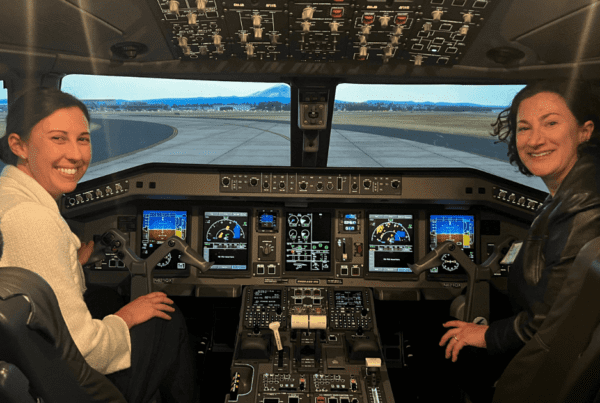Highlights | Keeping up with the latest COVID-19 research
- The COVID-19 Literature Surveillance Team is a nonprofit composed of medical students, researchers and physicians.
- Contributors read, grade, analyze and summarize the latest research.
- They produce a daily report and podcast to help busy care providers and decision-makers stay up to date with new and evolving research.
Scientific and medical journals are overwhelmed with incoming COVID-19 research. According to one database, over 200,000 COVID-19 articles were published in 2020 (but, as Nature notes, the exact number of publications is difficult to determine since it’s dependent on search terms and database coverage). Many journals even removed pay walls on COVID-19 research to help circulate the research more widely and make it more accessible within the scientific community.
The big question is: How do scientists, researchers and medical providers, not to mention scientific or medical journals, thoroughly examine the research and determine if it’s scientifically sound?
For a while now, many in the scientific community have been pointing toward artificial intelligence. But until that technology has gone through its own reviews, humans are left to sift through information at a slower pace.
Enter the COVID-19 Literature Surveillance Team (COVID-19 LST), a team of over 100 medical students, researchers and physicians from all over the globe who read the research, grade the level of evidence and bring providers the bottom line.
Called into action
Co-founder Will Smith, MD, clinical assistant professor at UW School of Medicine, was activated by the U.S. Army and recognized the need for a better way to stay on top of the latest research and easily share that information. What he needed was a comprehensive literature report.
Jasmine Rah, co-founder and one of Smith’s fourth-year students, created the report while quarantining in early March after a possible COVID-19 exposure. She read the literature that was being published daily, graded the level of evidence and wrote a thorough summary. The report was useful to Smith and his colleagues and eventually was more widely shared with the Army and other agencies.
The literature report became popular in government circles as well as with medical students and has even been shared internationally. Now, the Defense Advanced Research Projects Agency is using COVID-19 LST data to work on generating AI systems that will help compile and sort research in the future.
The report has evolved into the COVID-19 LST: A team of more than 100 medical students, researchers and physicians from over 20 institutions produce a website, a daily report and even a podcast.
“Our work now supports key decision-makers, healthcare professionals and the general public,” says Rah.
What they don’t teach you in medical school
According to Justin Doroshenko, COVID-19 LST’s director of operations and fourth-year student at University of New England College of Osteopathic Medicine, the team has reviewed over 6,500 articles and published over 200 reports since March.
At this point Rah and Smith have the review process down to a science — they have to in order support all that research.
Clear expectations and processes are what help make this team so successful. Most of the contributors are medical students with varying degrees of experience conducting literature reviews.
“We have a standardized process where contributors evaluate the level of evidence using the Oxford levels of evidence grading system and create a summary of main points,” says Avery Forrow, a third-year medical student at UW School of Medicine. “It’s then submitted to an editor, goes through multiple rounds of editing and is eventually evaluated by a chief editor — it’s a rigorous process.”
This process helps everyone, despite their experience level, be on the same page and makes it easier to identify where students might need help or extra review.
Like the grading process, their training to be a contributor is also standardized. Starting with a few practice articles, contributors get a feel for how the process works and the expectations for evaluation standards. Then, most of the training is on the job; contributors work closely with their editors to improve their evaluations and summaries.
Eva Shelton is a third-year medical student at UW School of Medicine who started as a contributor in June. She worked her way up to becoming an editor and says the role has refined her critical thinking skills.
“We learn how to figure out how convincing the data is and if the article is truly studying what they say they are studying, and if not, how to communicate what went wrong,” says Shelton.
Sangeetha Thevuthasan, a third-year medical student at UW School of Medicine, feels similarly.
“I have become more confident in my reading and analyzing skills. This is something I will take into my career that will be really helpful,” says Thevuthasan.
Rah explains that teaching the contributors, editors and senior editors to have the confidence to say, “I’m not convinced by that data,” is really important, especially in what she references as a “publish or perish economy,” where predatory journals don’t do an adequate job of reviewing articles.
“I’ve learned to not just take articles for their word, but for what their evidence shows,” says Forrow. “There is little to no teaching on how to do that in medical school.”
As much as COVID-19 LST is filling the need to keep up with new research, it is also fulfilling an important role in medical school education: how to read and analyze data and literature.
Finding hope
From being on the frontline to having to forego clerkships, COVID-19 has been a defining part of medical education this past year.
“I care for COVID-19 patients and I have watched a lot of people die,” says Shelton. “Being a part of this project and having read some of these articles, I feel there is hope out there and having evidence-based research for how we treat patients and what we can do better will help us defeat COVID-19.”
Rah, who co-founded COVID-19 LST, says it has been inspiring to see how many people have volunteered to be part of this COVID-19 effort.
“With improvements in the quality of data, we now have a better understanding of what and who are spreading the virus and who is most at risk, and we know characteristics of the virus and its strains,” says Rah.
Now that two vaccines have received Emergency Use Authorization and been distributed in the U.S., COVID-19 LST plans to see how the literature responds to the vaccine trials and distribution and how that affects their literature report approach.
“It’s time for a reevaluation in how we are dealing with the pandemic,” says Rah. “And this project has been a really incredible way to give back.”
Stay informed
- Read the latest report.
- Listen to the podcast.
- Subscribe to receive daily emails.
- Follow along on Facebook, Instagram and Twitter.
- Want to get involved? Volunteer.


